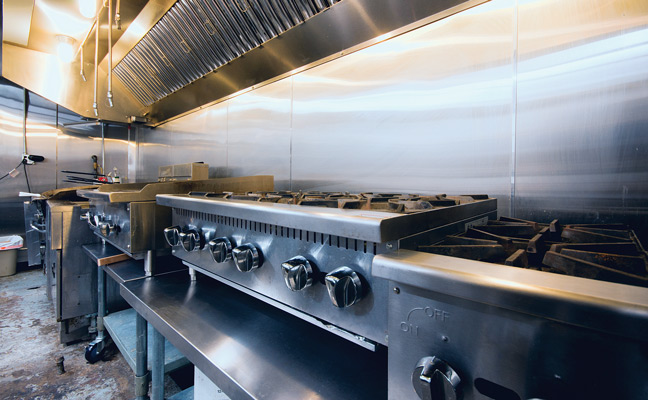
Even if the kitchen surfaces are gleaming, it’s what lies beneath that keeps the cockroaches fed. PHOTO: ISTOCK.COM/RONBAILEY
- Your search pattern matters for German cockroach inspections.
- Don’t miss the clues by moving too fast.
When it comes to eliminating the German cockroach (Blattella germanica) from any account, especially restaurant accounts, finding them is your most important task. If you have ever found yourself sitting on the floor of a commercial kitchen, wondering where the epicenter of the cockroach population might be, you should consider improving your inspection skills. Here are some fundamentals that might help.
1. Consider the 3 Ws. The German cockroach is a cautious, nocturnal insect that relies on its ability to hide as its main survival technique. They use chemical cues from droppings to establish harborages, which makes porous surfaces such as wood, pressed board or cardboard more attractive than solid surfaces. They need water to thrive and prefer warm places, so use the “3 Ws” — wood, water and warmth — to guide your search.
2. Incorporate an extension mirror. Cockroaches’ preferred harborage type is “dark,” but you can’t always simply crouch down and shine a flashlight on them. They often go around several corners before stopping, and finding them means getting underneath and behind equipment. An extension mirror can let you see around corners and over your head, and should be in every inspection kit.
3. Nighttime is the right time. Cockroaches are nocturnal, so make arrangements to inspect after the kitchen closes. Morning inspections can work, but it’s always easier to find them when they are active.
4. Slow and steady wins the race. Plan your inspection by starting with primary harborages and moving methodically through every area. There will be droppings and cast skins where they spend their time, so you should be looking for more than just live cockroaches. These cues can be subtle, so don’t rush your inspection. Moving too quickly is a common failing. In areas where cockroaches have been caught or observed, be sure to take your time. Assume there is a hidden area that might be missed if you rush through your search. Also, don’t skip around from one sink to the next; it just leaves holes in your inspection. Inspect every wheel, every electrical cord and every refrigerator compressor.
5. Don’t skimp on the insect monitors. Trap catch results are worth their weight in gold. Be sure to place them out of the way of kitchen operations — out of general sight is even better. If this is an initial inspection, you will have to go it on your own. Regardless of your success in inspecting, deploy monitors as you go for next time. Cockroach control is always a multi-visit affair.
You can reach Mark Sheperdigian, BCE, vice president of technical services, Rose Pest Solutions, Troy, Mich., at shep@rosepest.com.
Leave A Comment